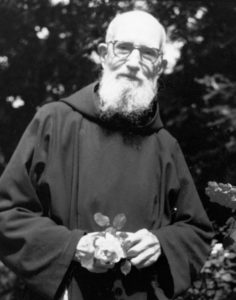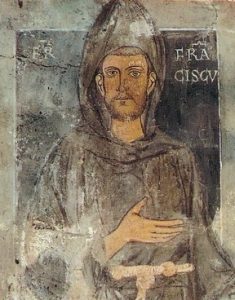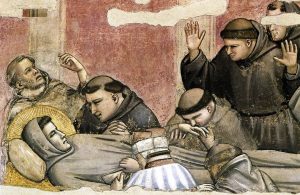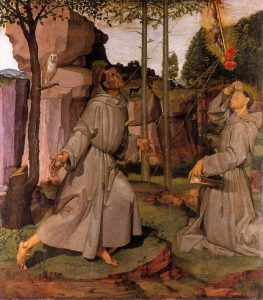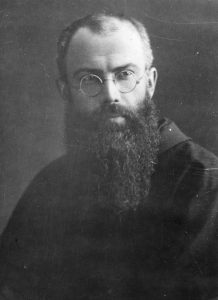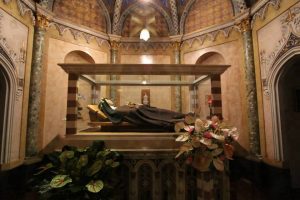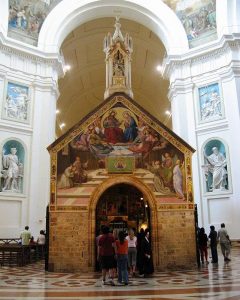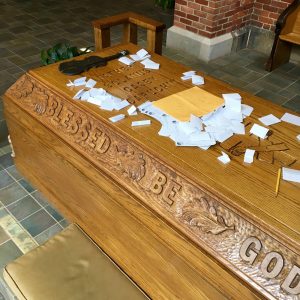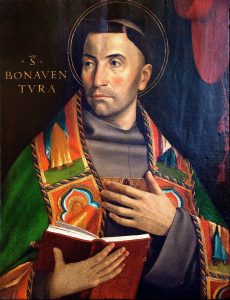 We are honoring the memory of St. Bonaventure of Bagnoregio (ca. 1221-1274) today. One of the great scholastic theologians and pastors of the Church. I hope the Thomists won’t get mad!
We are honoring the memory of St. Bonaventure of Bagnoregio (ca. 1221-1274) today. One of the great scholastic theologians and pastors of the Church. I hope the Thomists won’t get mad!
There are many who make the claim that the best general introduction to the thought of Bonaventure is Sister Ilia Delio’s, Simply Bonaventure (New City Press, 2nd ed.) And I agree. But if you need another resource, consider this encyclopedia entry (2005/2013).
Bonaventure, having joined the new movement of Friars in Paris, his priestly and academic career was centered at the Franciscan School of Theology at the University of Paris from 1248-1257. By this time he garnered the attention of his brothers and churchmen at large. He was elected General Minister of the Order governed his brothers for 17 years. It may be said that after the early days of Francis and the early leadership of the Franciscan movement Bonaventure makes his Order credible and and reliable. Thereafter, Bonaventure was elected to serve the Roman Pontiff as Cardinal-Bishop of Albano and expert at the Second Council of Lyons; At Lyons, he died during the Council.
The scholarship on Saint Bonaventure reveals to us that he emphasized all learning must serve the ultimate goal of human life: communion with God. His work is greatly trinitarian and Chriwstocentric. For him, and for us, Christ is the one and true Master! This is a critical point for knowing today’s saint: learning is not meant for self-aggrandizement but to help a person realize that he or she is on a journey toward union with a loving God –a communio theology. You could say with seriousness that to do otherwise is to reduce theology and learning to absurd levels and miss the point of knowing, loving and serving the Blessed Trinity.
Consider this passage from his treatise, “The Tree of Life”:
“You soul devoted to God,
whoever you are, run
with living desire
to this Fountain of life and light
and with the innermost power of your heart
cry out to him:
‘O inaccessible beauty of the most high God
and the pure brightness of the eternal light,
life vivifying all life,
light illumining every light,
and keeping in perpetual splendor
a thousand times a thousand lights
brilliantly shining
before the throne of your divinity
since the primeval dawn!
O eternal and inaccessible,
clear and sweet stream from the fountain
hidden from the eyes of all mortals,
whose depth is without bottom,
whose height is without limit,
whose breadth cannot be bounded,
whose purity cannot be disturbed.
From this Fountain
flows the stream of the oil of gladness,
which gladdens the city of God,
and the powerful fiery torrent,
the torrent, I say, of the pleasure of God,
from which the guest at the heavenly banquet
drink to joyful inebriation
and sing without ceasing
hymns of jubilation.
Anoint us
with this sacred oil and refresh
with the longed-for waters of this torrent
the thirsting throat of our parched hearts
so that amid shouts of joy and thanksgiving
we may sing to you
a canticle of praise,
proving by experience that
with you is the fountain of life,
and in your light we will see
light (see Ps 36:10).”
This image of Saint Bonaventure, is depicted by the Veronese painter, Paolo Morando Cavazzola (1486-1522). Few medieval depictions of Bonaventure exist; Bonaventure was not canonized until 1482.

